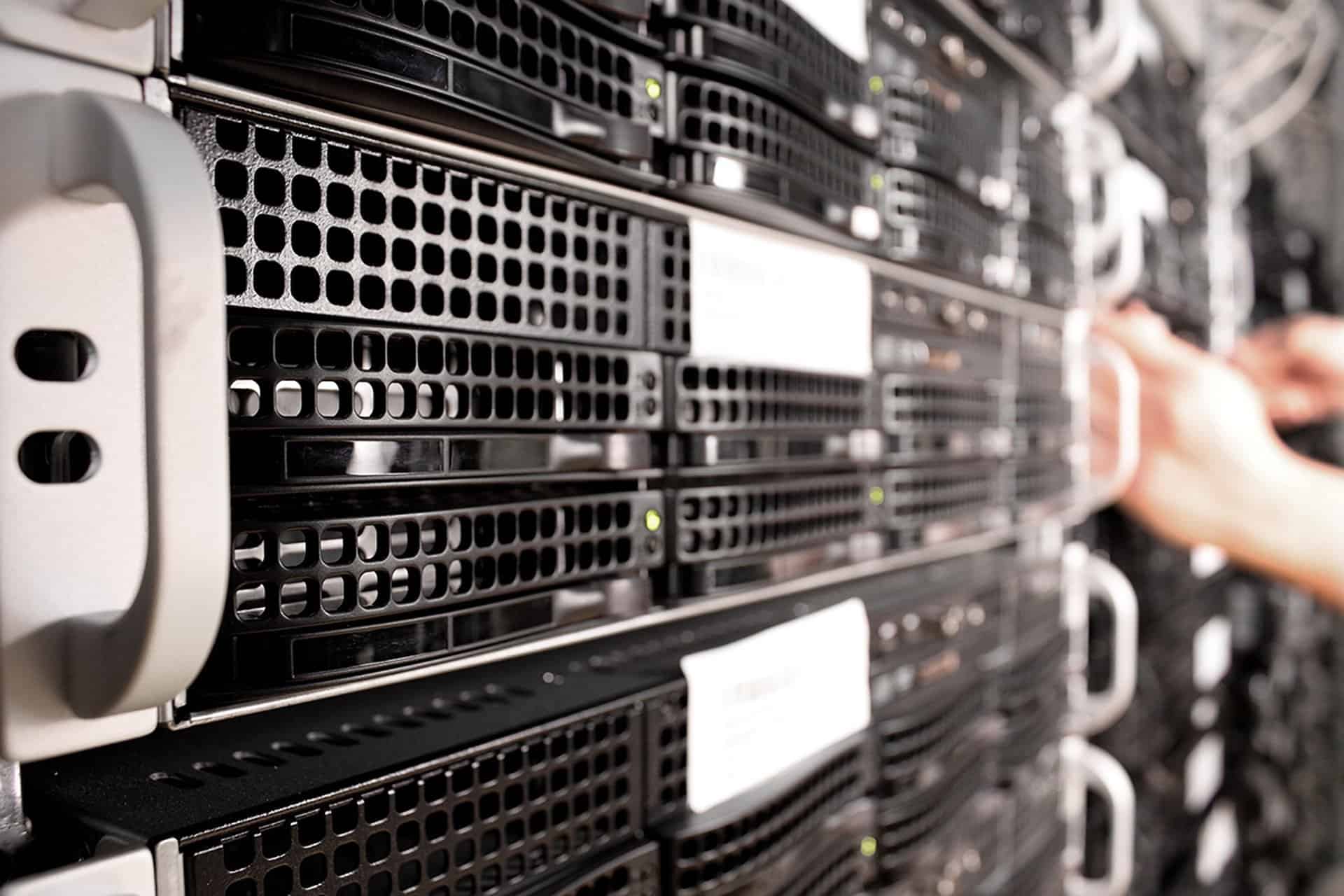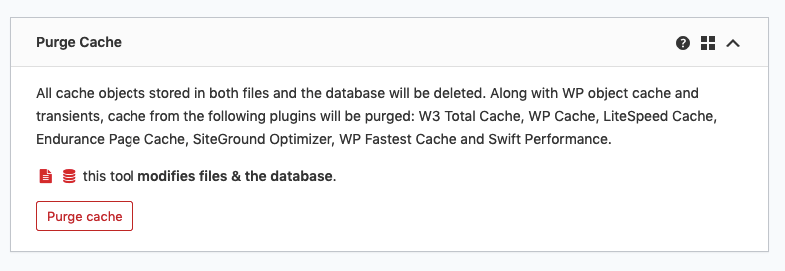Has this ever happened to you? You are excited about a new plugin for your WordPress site. You download and immediately install it on your site. However, your site shows no changes. You try reinstalling the plugin and refreshing your site pages – but to no avail. If it has, don’t worry, this is quite common and happens because you have enabled your browser cache.
Let’s get started.
What is WordPress Website Caching?
Take any WordPress website, and you find that it contains various elements – the content, stylesheets, images, videos, and more.
When a user visits your website, these elements are transmitted from your webserver to their browser before they see the web page. Here are the steps in this process:
- The user types your site’s URL on their browser.
- Their browser then sends an HTTP request to your webserver to open your website.
- Your web server processes this request and starts retrieving the necessary data to be transmitted to the user’s browser.
- Finally, the browser compiles all the transmitted data and renders them as the requested web page.
This process is repeated each time the visitor navigates to your website. However, if you have enabled caching, these steps are completed faster, thus enabling faster website loading on any browser. How does that happen?
On the first visit, your website elements (text, images, scripts, and the rest) are converted into a static HTML file and stored on the visitor’s device. This process is referred to as caching.
For site visits after this, after steps 1 & 2 are, if there is no change on the website page, the cached copy of the website page is retrieved from the user’s device and displayed on the browser. This process enables faster page loading. What happens if the website page does contain changes? In that case, the old cache gets dumped automatically, and the refreshed page is displayed to the user.
What are the benefits of caching?
- Faster page loading provides a better customer experience.
- Lesser load of processing HTTP requests for your web server
- A useful feature for sites that experience a sudden increase in incoming traffic
There are primarily two types of WordPress caching – Browser Caching and Server Caching. Let’s examine them in more detail in the next section.
Types of WordPress Caching
WordPress caching can be implemented in the following ways:
Browser Caching
Also referred to as client-side caching, this is the most popular form of caching where the static website pages are stored on the user’s local hard disk or memory. Browser caching is a faster mode of displaying website pages as the cached copy is retrieved and loaded from the user’s device.
Server Caching
Server caching is an effective mechanism that can generate cached pages for any WordPress site. This type of caching resides between the user’s browser and your web server and is useful for large websites with many databases. To improve efficiency, server caching also stores static HTML pages on the web server’s storage space or RAM.

Server caching is not as fast as browser caching and can also overload your web server, particularly when the cached files are heavy. However, browser caching is associated with typical problems like your browser still showing the older webpage even after many modifications.
To resolve this problem, you need to clear your browser cache, which is what we shall learn next.
How to Clear Your WordPress Cache
As discussed in the previous section, website caching provides an efficient mechanism of website loading. Changes such as activating a new WordPress plugin or modifying the website design should automatically replace the cached content with the new version. However, in some instances, the caching mechanism fails, and your website continues to show outdated content.
To resolve this, you need to clear your existing WordPress cache from the browser or even your server cache. However, please be warned that after clearing your cache, you could experience the slow loading of individual websites. Hence, this process must be performed only if necessary.
In the following sections, we shall talk about clearing cache:
- On the browser
- On the webserver
- If you’re using WordPress caching plugins
Clearing Browser Cache
Before we proceed, it’s important to note that clearing the browser cache is something you can only do for your device.
The browser cache is the temporary caching location on your computer where your browser tool downloads and stores website images, documents, and other data for faster website loading.
Popular browsers like Google Chrome, Mozilla Firefox, and Apple Safari support caching of your website content. Let’s discuss how you can clear your cache on each of these browsers:
On Google Chrome

- Open the Google Chrome browser and navigate to the Chrome settings option.
- From Chrome Settings, search for “Clear browsing data” to open the following screen.
- Click “Clear data” to remove your cached content.
On Mozilla Firefox
- Open the Mozilla Firefox browser and navigate to Preferences.
- From the “Privacy & Security” page, navigate to the “Cookies and Site Data” option.
- Click “Clear Data.”

- Select the “Cached Web Content” box before clicking Clear.
On Apple Safari
- Open the Apple Safari browser and navigate to Preferences.
- From the Advanced tab, select the “Show Develop menu in menu bar” box.
- From the “Develop” menu in Safari, select the “Empty Caches” menu option to clear your browser cache.
Additionally, you can clear your browsing history by clicking the “History” menu and then clicking “Clear History.”
Clearing Server Cache
Although used for the same purpose, server cache is different from browser cache as it includes caching of server-side files, including PHP files, and MySQL files. If clearing your browser cache does help, then you may need to clear your server cache as well.
Server caching is typically performed by your WordPress host provider who stores a cached version of your website files. The mechanism of clearing server cache differs depending on the hosting provider. Let’s talk a bit about three of the popular hosting platforms:
Siteground
Siteground uses the “Static Cache” feature that is enabled for all Siteground shared accounts. As a developer, you can disable the Static Cache from the Siteground control panel for a specific website.

Kinsta
If you are using the Kinsta managed hosting platform, you can clear your website cache yourself. Kinsta uses the Kinsta MU caching plugin that you use to clear the cache as follows.

Using WordPress Caching Plugins
Website speed is critical for the success of your business website. In fact, statistics show that even a three-second delay can cause 53% of users to leave.
Website caching is an effective way to improve your site’s loading speed, increase user satisfaction, and improve SEO ranking.
For WordPress sites, caching plugins are easy to install and configure. Some of the popular ones are WP Reset, WP Super Cache, W3 Total Cache, and Litespeed Cache. Additionally, you can also use these to clear your cache. As with any major changes to your site, we recommend that you take a complete backup of your WordPress site before you install and use them. For this, you could use top WordPress backup plugins like BlogVault that automate the entire backup process for you so you can avoid spending additional time and effort on this.
Let’s now look at how you can clear your cache using the following three popular plugins:
WP Reset PRO
- Find WP Reset PRO in your tools section and navigate to the “Tools” tab.
- Simply click on the “purge cache” button, and you are all done!

WP Super Cache
- Log into your WordPress admin account and navigate to the “Settings” page for your installed WP Super Cache plugin.
- Use the “Easy” tab to delete your cached pages, as shown below.

Alternatively, you can use the “Advanced” tab to clear your cache automatically or at fixed intervals.
W3 Total Cache
- Log into your WordPress admin account and from the “Performance” menu, navigate to the “Settings” page for the W3 Total Cache plugin.
- Scroll down to the caching settings for your WordPress site and click either of the two available options:
- Empty cache: when you simply want to delete the cached data for your website
- Save Settings & Purge Cache: when you want to save any changes in caching configuration and also clear the cached data.

Alternatively, you can clear all your cached data instantly by clicking Performance menu > Purge All Caches in the WordPress admin toolbar.
Conclusion
Considering users’ reduced patience with low-speed websites, you must do what it takes to speed up your website. Caching is an effective way to improve website speed and reduce the processing load on your WordPress server. However, as we saw, there are times when you may have to clear this cache to show updated content to your visitors.
We hope this article helped you learn more about caching and clearing your cache. We would love to know what you do for effective caching on your site. Are there any exceptional caching tools that you recommend? Do leave your suggestions and comments below.
